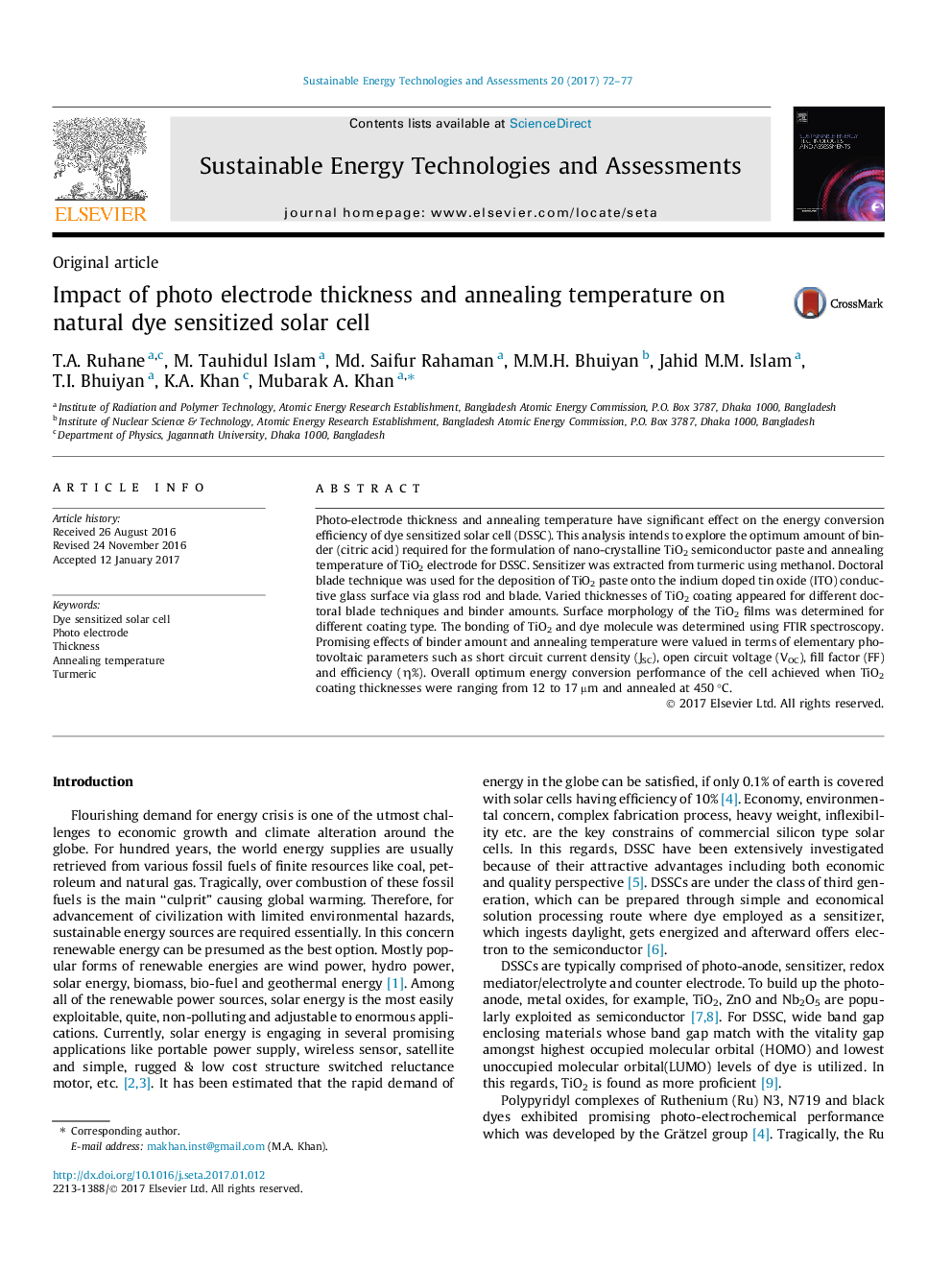| Article ID | Journal | Published Year | Pages | File Type |
|---|---|---|---|---|
| 5483544 | Sustainable Energy Technologies and Assessments | 2017 | 6 Pages |
Abstract
Photo-electrode thickness and annealing temperature have significant effect on the energy conversion efficiency of dye sensitized solar cell (DSSC). This analysis intends to explore the optimum amount of binder (citric acid) required for the formulation of nano-crystalline TiO2 semiconductor paste and annealing temperature of TiO2 electrode for DSSC. Sensitizer was extracted from turmeric using methanol. Doctoral blade technique was used for the deposition of TiO2 paste onto the indium doped tin oxide (ITO) conductive glass surface via glass rod and blade. Varied thicknesses of TiO2 coating appeared for different doctoral blade techniques and binder amounts. Surface morphology of the TiO2 films was determined for different coating type. The bonding of TiO2 and dye molecule was determined using FTIR spectroscopy. Promising effects of binder amount and annealing temperature were valued in terms of elementary photovoltaic parameters such as short circuit current density (JSC), open circuit voltage (VOC), fill factor (FF) and efficiency (η%). Overall optimum energy conversion performance of the cell achieved when TiO2 coating thicknesses were ranging from 12 to 17 µm and annealed at 450 °C.
Related Topics
Physical Sciences and Engineering
Energy
Energy Engineering and Power Technology
Authors
T.A. Ruhane, M. Tauhidul Islam, Md. Saifur Rahaman, M.M.H. Bhuiyan, Jahid M.M. Islam, T.I. Bhuiyan, K.A. Khan, Mubarak A. Khan,
